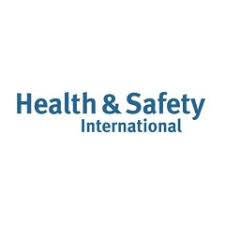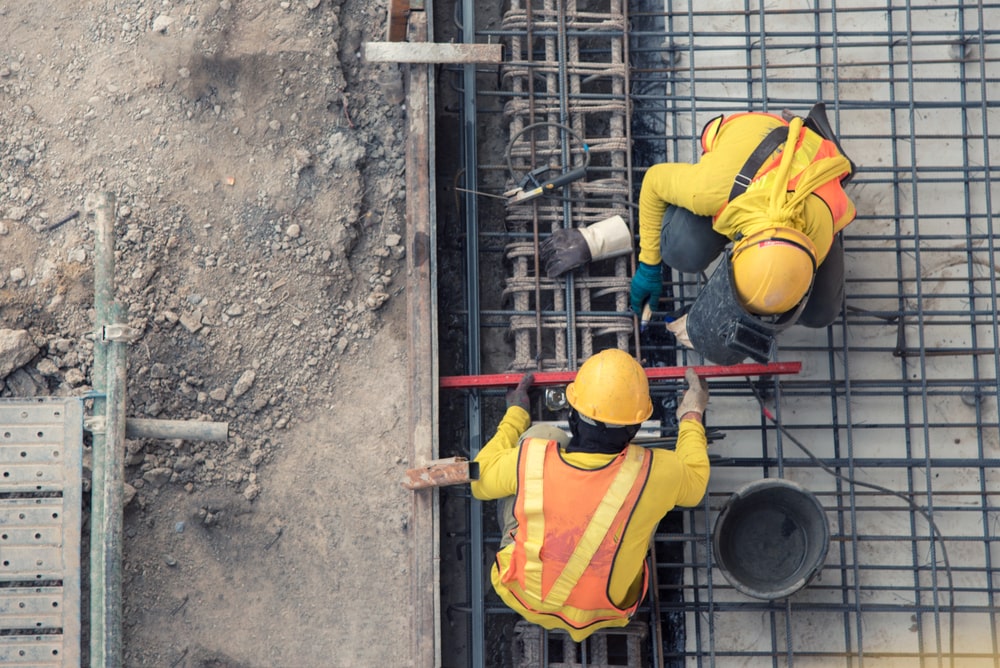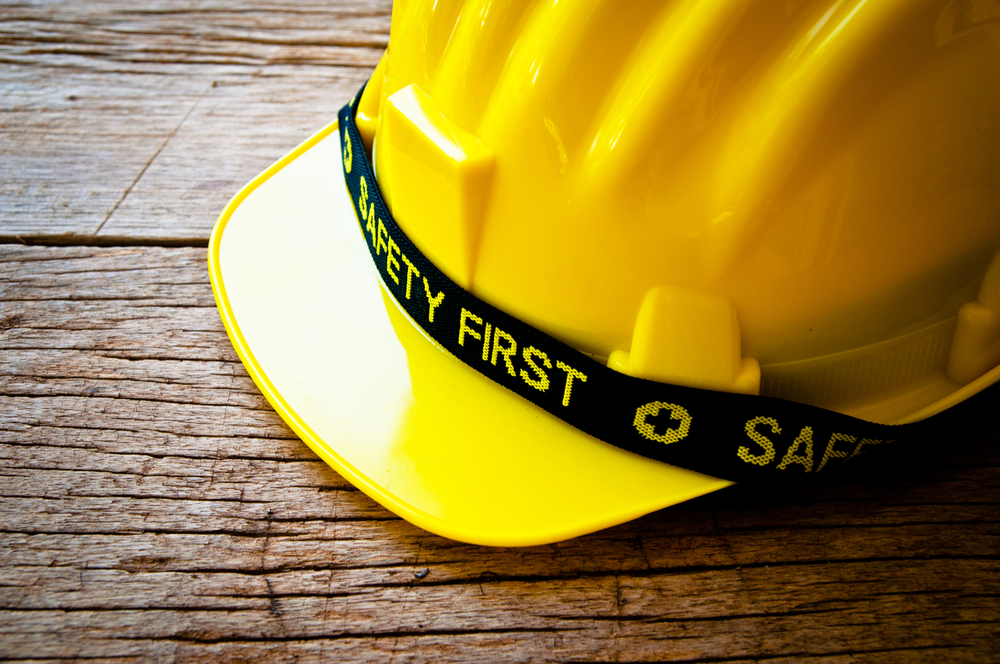News Post
November Newsletter
Preventing the spread of Ebola in health workers
Since the Ebola outbreak, more than 4,000 people in West Africa have died from the disease and it has started to reach countries such as Spain, Germany and the US.
Transmitting the disease
The Ebola virus spreads in humans through person-to-person transmission via direct contact (through broken skin or mucous membranes) – the blood, secretions or other bodily fluids of infected people and with surfaces and materials (e.g. bedding and clothing) contaminated with these fluids. People remain infectious as long as their body fluids, including sweat, contain the virus. This includes the infected deceased.
Most at risk of infection (after family members) are doctors, nurses and other healthcare workers who are treating Ebola patients in environments where infection control precautions are not strictly practiced. This, then, is an occupational health concern, not just a public health issue.
Best practice
To ensure understanding and implementation of best practice in preventing and controlling the spread of Ebola during its treatment, and to control the risk of infection of healthcare workers, occupational hygiene has a fundamental role to play.
For example, in a confirmed Ebola case, applying the right control measures along the transmission path (by engineering controls) and at the worker level (by administrative controls and personal protective equipment [PPE]) are vital.
Engineering controls include:
- isolation
- containment
- segregation
- local exhaust ventilation [LEV]
PPE measures include:
- effective hand hygiene
- the use of double gloves
- Type 4 fluid repellent disposable suits
- face and eye protection
- FFP3 disposable respirators
Administrative controls would include the appropriate donning, doffing and disposal of all PPE and infected waste, as well as broader public health actions such as categorisation and management of contacts.
UK preparations
For this outbreak, the UK has pledged £125 million to support the global effort to contain, control and defeat the disease in Sierra Leone. Part of this commitment includes the supply of over half million disposable coveralls, hoods, gloves, respirators and full-face visors. This kit, supplied by Arco, if donned and doffed correctly, will protect the worker from infection. As it is designed for single use, it is effectively disposed once worn.
These measures must be accessible as soon as an infected patient is identified, so the role of occupational hygiene in the protection of health care workers should begin much earlier in a hospital’s procedures, when the risks are assessed and the correct control approach is put into place and implemented in time.
Other occupations at risk of Ebola infection include ambulance staff, laboratory workers, public health professionals, mortuary and funeral personnel – all whose work places, systems and procedures require the application of similar and timely occupational hygiene principles and practice to enable effective prevention and control in the future.
The five essential elements of driver risk management
Do your staff drive on business? If so there are certain activities that all employers must undertake as part of their duty of care under current health and safety at work legislation.
1. Employer Risk Assessment
Under the Management of Health & Safety at Work Regulations, employers are required by law to carry out a written assessment of the risk involved in asking staff to drive on business – risk both to the drivers and other road users.
2. Safer Driver Policy
This sets out the rules that your drivers must follow and includes things like your rules on mobile phone use, guidance for vehicle checks and alcohol awareness. It also needs to explain your employees’ responsibilities for driving safely, informing you of collisions and convictions, and making sure they understand why they will need to have business cover added to their private motor insurance if they ever use their own car for a business journey. The policy must be detailed, comprehensive and robust – one or two pages of bullet points is not sufficient. Happy with your policy? It then needs communicating effectively to all drivers to make sure they understand what standards are expected. A handbook is a good idea but you may also like to supplement this with monthly emails or toolbox talks to reinforce their awareness in specific areas.
3. Licence Monitoring
Employers MUST check that their drivers are correctly licenced to drive the vehicle in question and that they do not have any convictions, restrictions or disqualifications that mean they shouldn’t be driving. Many companies visually check driving licences on joining, or even annually but this is often not considered a sufficiently compliant activity in court due to the potential for fraud. Employers should look to monitor licences on a regular basis directly against the DVLA database.
4. Driver Risk Assessment
Employers should risk profile their drivers to ensure competence (especially where new recruits or graduates are concerned) and to assess whether drivers may be at greater risk from driving higher mileages, the types of road they use, the times of day they commonly drive and the length of their working day as well as many other variables such as their job role and the type of vehicle they drive.
5. Record Keeping
Finally it is absolutely essential to have a solid audit trail. In the event of a serious collision, the police will want to see adequate record keeping for all of the above activities in relation to the driver concerned.
Get the above activities sorted out and you’ll be well on your way to being a compliant business.
Boss denies unlawful killing due to gross negligence
It has been heard in court that a man died in a cement mixer over a decade ago because of the gross negligence of his boss.
He suffered fatal injuries in 2002 at a farm after the employee and his boss, had been inside the drum of the mixer trying to loosen hardening concrete.
It was alleged at Crown Court that after exiting the drum, the employee became entangled on the outside of the machine and died after becoming trapped between the drum and chassis of the vehicle.
Detectives exhumed the employee’s body from the cemetery last year in order to pursue evidence which was not developed in the hours after his death.
The employer denies unlawfully killing the employee as a result of gross negligence and breaking health and safety laws by failing to protect him at work.
Opening the prosecution’s case, the QC claimed that stated that the employer had a “lax attitude to safety”.
It was heard that:
- The employee had not been offered any training for using the mixer
- No safety clothing or equipment had been provided by the employer
- Basic safety measures, including locking levers which controlled the rotation of the drum, completely isolating the engine that powers it, and making sure the cab door was locked, so there was no chance the drum could start up with someone inside, would have reduced the risk of a serious accident.
In court, the employer was quoted as saying, “there’s no safe way” to operate a concrete mixer when interviewed by the police in 2002.
The trial continues.
Fatality investigation uncovers risk-assessment flaws
An engineering firm has been fined £40,000 after an employee was crushed to death while making repairs to a plant vehicle.
He, was working at a factory, when he was found dead. The company modifies construction equipment such as excavators, and the employee was installing a third line on to a wheeled loader.
CCTV footage showed that he was working alone under the vehicle’s arms when the hydraulic system lost pressure, causing the loading arm to fall and crush him against the vehicle frame. A colleague found his body a few hours later.
The HSE’s investigation found that the firm had not carried out a sufficient risk assessment as it failed to specify how workers should safely support the hydraulic loading arm. It also discovered that the employee had not been given adequate training on how to work on hydraulic machinery and, as a result, he was unaware of the risks involved.
The company was issued a Prohibition Notice, which required it to stop carrying out maintenance on wheeled loaders until an adequate risk assessment had been undertaken.
A HSE inspector, said that the incident could have been avoided if metal supports had been placed over the machine’s piston cylinders to prevent the hydraulic arm from being able to drop. He said: “It is a tragedy for the man’s family that his death could have been prevented if the company had taken the time to properly consider the risks.
“Had the company provided a suitable load-tested support device, this would, in conjunction with a safe system of work, have stopped the loading arm falling on to the man, and prevented his death.”
The company appeared at Crown Court and pleaded guilty to breaching s2(1) of the HSWA 1974 and reg. 3(1) of the MHSWR. In addition to the fine, it was ordered to pay £20,000 in costs.
In mitigation, the firm said it had a previously unblemished heath and safety record and it fully cooperated with the investigation. It said it regretted the incident and it has not carried out work of this nature since the employee’s death.
An Inspector later added: “When carrying out work under hydraulically-supported loads, it is vital that a thorough risk assessment is carried out beforehand and that suitable control measures are taken to minimise the significant dangers created by this type of work.”
Security firm sentenced following engineer’s fall
A security firm has been fined £6,000 after a maintenance engineer broke his elbow when he fell more than three metres through fragile ceiling tiles at a site. HSE said that the company failed to carry out adequate risk assessment and failed to implement measures to prevent falls.
The engineer, was attempting to access an electrical control panel in a ceiling void to fix a faulty roller shutter door when the incident happened. He sustained a fractured elbow and ankle.
The company was prosecuted by HSE after an investigation identified they had failed to make sure the work on the ceiling panels was carried out safely.
The Magistrates Court heard that the engineer, who had worked on the same door on previous occasions, accessed the void by a ladder supported by a colleague. He then made his way across the ceiling panels, which were attached directly to the underside of timber joists, using a wooden ply board as a work platform.
After repairing the control panel and checking the door was operational, he fell through the ceiling to the floor below.
The HSE found the company didn’t have a sufficient risk assessment in place for undertaking work at height on the site. Following the incident the electrical control panel was relocated to ground level to avoid the need to work on the fragile ceiling.
The company was fined £6,000 and ordered to pay costs of £440 after pleading guilty to a single breach of the Work at Height Regulations 2005.
Speaking after the hearing, the HSE inspector said: “The company was a regular contractor at that site but failed to carry out an adequate risk assessment that identified the fragile ceiling surface and the need to work above it. And in turn, they failed to implement measures to prevent falls through fragile ceiling surface when work was being undertaken in the void. It was luck rather than good management that someone had not fallen before.
“Incidents involving falls through fragile roofs are unfortunately all too common. Employers have responsibility to ensure that suitable risk assessments are undertaken for work at height, and to make sure that robust and safe systems of work are implemented.
“This engineer was very fortunate not to have suffered far more serious injuries, or indeed injure others as he fell to the ground.”
HSE – Safety Alert
Hydraulic injection injury
|
Health and Safety Executive – Safety Alert |
|
|
Department Name: |
Field Operations Directorate – Product Safety Group |
|
Bulletin No: |
FOD 4-2014 |
|
Issue Date: |
23 September 2014 |
|
Target Audience: |
Hydraulics engineers, Construction Quarrying and tunnelling Engineering Maintenance and Service personnel |
|
Key Issues: |
A maintenance fitter died from hydraulic injection injury sustained whilst tensioning the track of a piling rig. The grease nipple became detached from the track mechanism permitting the release of grease under high pressure. This alert reminds the target audience of the potential for such injury when working on any hydraulic machinery. |
Introduction:
The purpose of this safety alert is to raise awareness of the risks from hydraulic injection injury. Initial findings from an HSE investigation has found that whilst a maintenance fitter was using a hand powered grease gun to tension the track of a piling rig, the nipple connecting the grease gun to the track mechanism detached, permitting the grease (under significant stored energy) to release, injecting the fitter.
Background:
Hydraulic injection injury occurs when the outer layer of skin is broken by a jet of fluid under pressure. Although serious reported instances of hydraulic injection have occurred at pressures over 100 bar (1450 psi), anecdotal evidence suggests hydraulic injection injury may occur at pressures as low as 7 bar (101.5psi) [1].
Injection injury often results from a failure of a component in the mechanical system. This can result in the equipment remaining in use and pressurised whilst leaking fluid. [2]).
A person may come in to contact with a fluid jet while using equipment or when carrying out inspection and/ or maintenance prompted by a reduction in performance of the equipment.
This can cause harm in two ways:>
- The mechanical pressurised penetration and subsequent trauma to the surrounding and underlying tissue
- The toxicity of the fluid injected into the injured party
The severity of the injury varies according to the following:
- Pressure
- Proximity
- Jet size
Following any injection injury, prompt action is essential to save the injured persons limb, or even life. Without medical treatment, after four – six hours the victim may experience intense throbbing pain that is unresponsive to pain medication. Without proper care injection injuries can lead to amputation of affected parts.
Action required:
Anyone maintaining mechanical plant should inspect the integrity and security of grease nipples and pipe work adapters used as part of track tensioning systems. This should take place at routine service intervals and before attempting to carry out vehicle track tensioning at any time.
Where replacement or maintenance takes place on a pressurised system, fittings should be matched and compatible as per the original equipment manufacturers specification. Verification of such replacement should be regarded as a pressure test and appropriate precautions taken [3].
Personnel should be familiar with the steps to take, if injection injury occurs, particularly the need to seek immediate professional medical treatment [4].
References:
[1] Hydraulic injection – HSL research report – RR976
[2] BS EN ISO 4413 (2011): International Standards Organisation – Hydraulic fluid power – General rules relating to systems
[3] Safety in pressure testing – HSE guidance note GS4
[4] Fluid Injection injury emergency – The facts – British Fluid Power Association
Further information:
Awareness to a previous reported incident is available at: safequarry.com .
General note:
Please pass this information to anyone involved in hydraulics engineering or general maintenance technicians.
Latest News
Health and Safety in Schools Checklist
Health and safety should be a top priority in any workplace, but especially in schools. Not only are you responsible for your staff’s safety, but you need to maintain the welfare of your pupils too. To do so, you must uphold your legal complian..
It can be difficult to decide your future path - a lot can ride on it, after all - but a career in health and safety could be the right choice for you. There are several types of careers in the health and safety industry that might be a good fit..
What is ISO 45001?
If you’re wondering what ISO 45001 is, then this is the guide for you. Replacing the old OHSAS 18001 standard, ISO 45001 is the new international standard for occupational health and safety management. In this guide, we'l..
Who Enforces Health and Safety?
The enforcement of health and safety is crucial to maintain healthy workplaces. The term health and safety itself covers the safety legislation and safety law that comes under the Health and Safety at Work Act 1974. In general, this means t..
Health and safety training is a requirement in the workplace, no matter which sector you work in. Our experts at SMS Europe have been providing an extensive range of specialist health and safety services for almost 20 years. To help make work en..
Health and safety in the workplace is all about controlling risks in a way that protects both your employees and your company. Strong leadership, including your employees, managers, suppliers, contractors, and consumers, is a characteristic of great ..
Health and safety in the workplace is immeasurably important. But, without the Health and Safety at Work Act of 1974, we might have never prized safety so highly. This piece of workplace legislation is highly significant and indeed has transform..
Fire Safety and Fire Risk Assessment at Leased Offices and Buildings Fire safety at leased single and multi- tenanted offices can be approached in a number of ways. Generally speaking, there are three types of premises, (single occupancy lea..
Safety Gloves
Please have a read at SMSE Managing Director Philip Marsden's article on Safety Gloves which is published in the February 2022 edition of Health and Safety International Magazine. https://www.hsimagazine.com/article/fits-like-a-glove/ We wo..
Current Health and Safety Industry Trends
New Guidance Released for Managing Home Workers As an employer, you have the same health and safety responsibilities for those who work from home as you do for all other employees who may work from the workplace. In most cases, the dange..
Who Is Responsible for the Health and Safety on a Building Site? Legally, the responsibility of health and safety within the business lies with the employer. It is up to them to make sure the environment meets the necessary health and safety requi..
No one wants to be injured whilst at work, and no one wants their staff to be injured, especially whilst on the job. That doesn’t mean that accidents don’t happen. In fact, each year an average of 22 manufacturing workers die in workplace..












